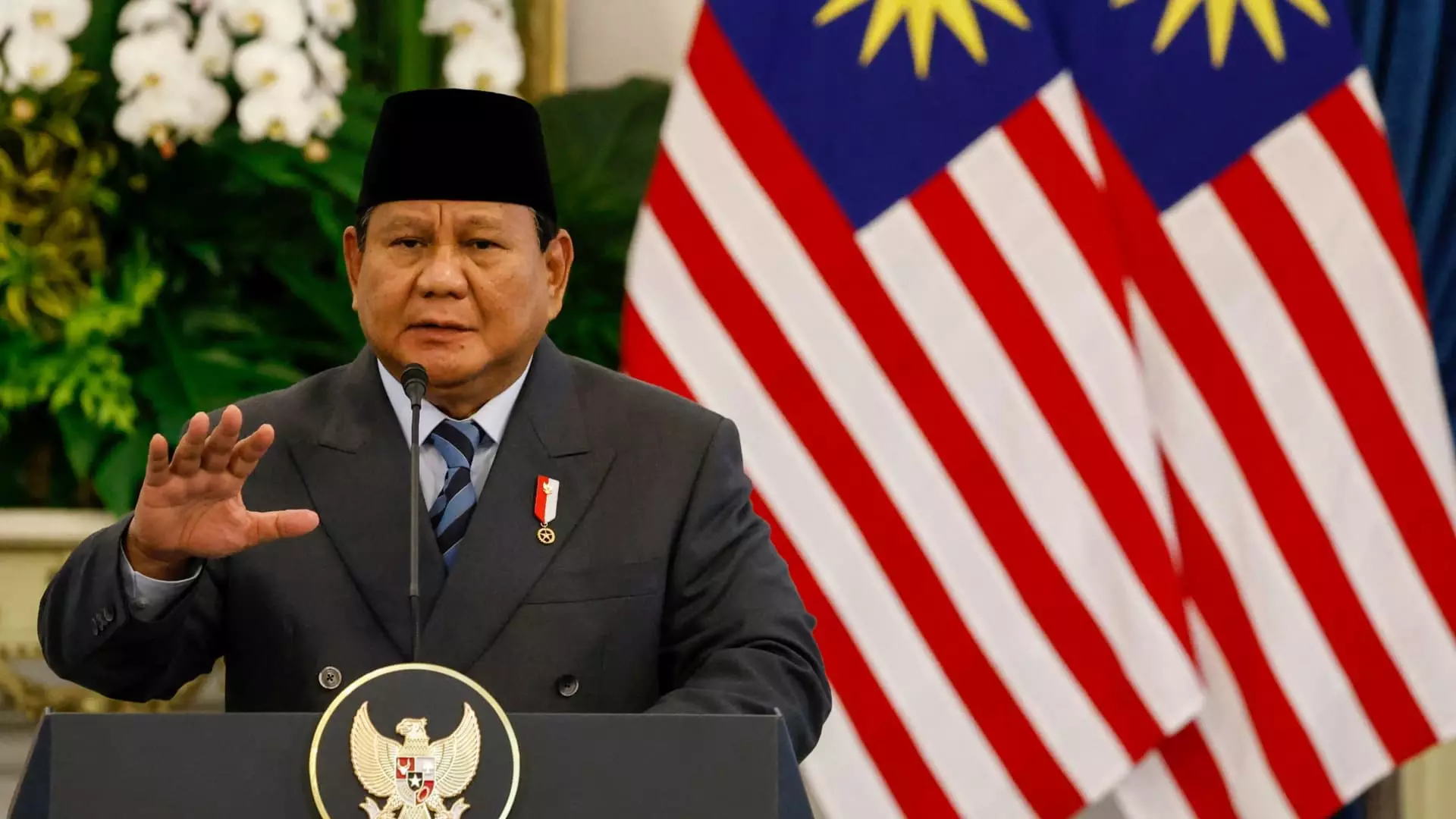The recent announcement of a trade agreement between the United States and Indonesia appears, at first glance, as a step toward fairer economic diplomacy. The White House emphasizes a framework where Jakarta agrees to significantly reduce tariffs on American goods, promising expanded access and the potential for mutually beneficial trade. Yet, beneath this veneer of progress lies a troubling reality: the agreement’s terms are crafted within a carefully constructed narrative that masks underlying geopolitical and economic vulnerabilities. While lowering tariffs from a confrontational 32% to a more manageable 19%, the deal still leaves American producers facing hurdles that could compromise long-term competitiveness, especially in emerging markets like Indonesia.
Much talk centers on the notion of safeguarding U.S. interests—an appealing narrative for those frustrated by outdated protectionist policies. However, in reality, this “reciprocity” often functions as a smokescreen. It provides the illusion of fairness while subtly reinforcing leverage over weaker partners. Indonesia’s concessions, while noteworthy, are just a fraction of the broader imbalance in economic power. This approach doesn’t fundamentally level the playing field but rather redistributes the risks while outwardly claiming progress. The real challenge is that such agreements tend to prioritize short-term political optics over genuine, sustainable economic fairness.
Strategic Moves or Political Spin?
The framing by U.S. officials highlights mutual gains—$15 billion in energy and a $3.2 billion aircraft purchase—details that sound promising on paper. Yet, these financial commitments are, in part, strategic gestures that serve political objectives more than genuine economic reform. The negotiation process itself remains opaque. While a formalized “agreement” promises future advantages, it often sidesteps deeper issues like labor rights, environmental concerns, and digital trade regulations that are critical in today’s interconnected economy.
Moreover, the timing and geographic scope of this deal bear scrutiny. Trump’s administration has been rapidly touting agreements with countries like Vietnam, the Philippines, and China—regions where economic and geopolitical stakes are deeply intertwined. These deals, often announced prematurely, tend to reflect political signaling more than tangible economic improvements. For Indonesia, this pact seems to fit within a broader pattern of the U.S. using trade negotiations as leverage rather than a genuine commitment to equitable economic partnership. It’s a game of strategic positioning, not necessarily a recipe for enduring prosperity for middle- and working-class Americans.
What Are We Really Gaining?
While figures such as Jamieson Greer promote the deal as a win for domestic producers—claiming unprecedented access and protection against high tariffs—the truth is more complex. The U.S. trade deficit with Indonesia remains large ($17.9 billion), and the agreement’s emphasis on lowering tariffs doesn’t inherently address the underlying structural issues such as market access barriers, regulatory hurdles, or the influence of Indonesian state-owned enterprises.
The focus on “non-tariff barriers” signals an awareness of the complex, often opaque nature of international trade. But in practice, these barriers are rarely eliminated overnight; they are embedded in local economies and political environments that may resist genuine opening. This raises questions about whether such agreements create real reciprocity or simply serve as a diplomatic fig leaf to cover ongoing economic frustrations.
Furthermore, the narrative suggests that America can “defend its domestic production” while gaining expanded market access—yet this glosses over the reality that economic globalization inherently incentivizes a race to the bottom, driven by competitive distortions and complex supply chains. The risk is that these deals might inadvertently deepen inequalities at home, as certain sectors are bolstered while others are left behind, all under the guise of technological and economic progress.
Is This Fair or Futile? The Dangerous Myth of Balanced Trade
Perhaps the most troubling aspect of these negotiations is how they perpetuate a dangerous myth—that balanced and reciprocal trade agreements are achievable in today’s global economy. The truth is, such ideals are often sacrificed at the altar of political expediency. The United States, wielding its economic and diplomatic power, positions itself as a benevolent partner seeking fairness. Yet, in practice, the underlying motive is often one of maintaining supremacy and extending influence—sometimes at the expense of genuine economic justice.
Looking forward, this pattern of quick agreements and lofty promises risks undermining the very notion of fair trade. If the past is any indication, these promises tend to be short-lived, overshadowed by broader geopolitical and economic shifts. For American consumers and workers, this means an ongoing struggle to secure benefits from a system increasingly driven by strategic interests rather than equitable growth. The seductive narrative of fair, balanced trade can obscure the reality that, for many Americans, the costs of such deals are often felt in diminished wages, lost jobs, and a diminished sense of economic sovereignty.
Ultimately, the story of U.S.-Indonesia trade negotiations exemplifies the peril of accepting superficial progress without critically examining who truly benefits. These agreements are increasingly symbolic—designed to project strength on the world stage rather than deliver tangible, long-lasting prosperity for everyday citizens. Underneath the veneer of reciprocity lies a complex web of power, politics, and short-term gains that threatens to deepen existing inequalities rather than resolve them.

Leave a Reply